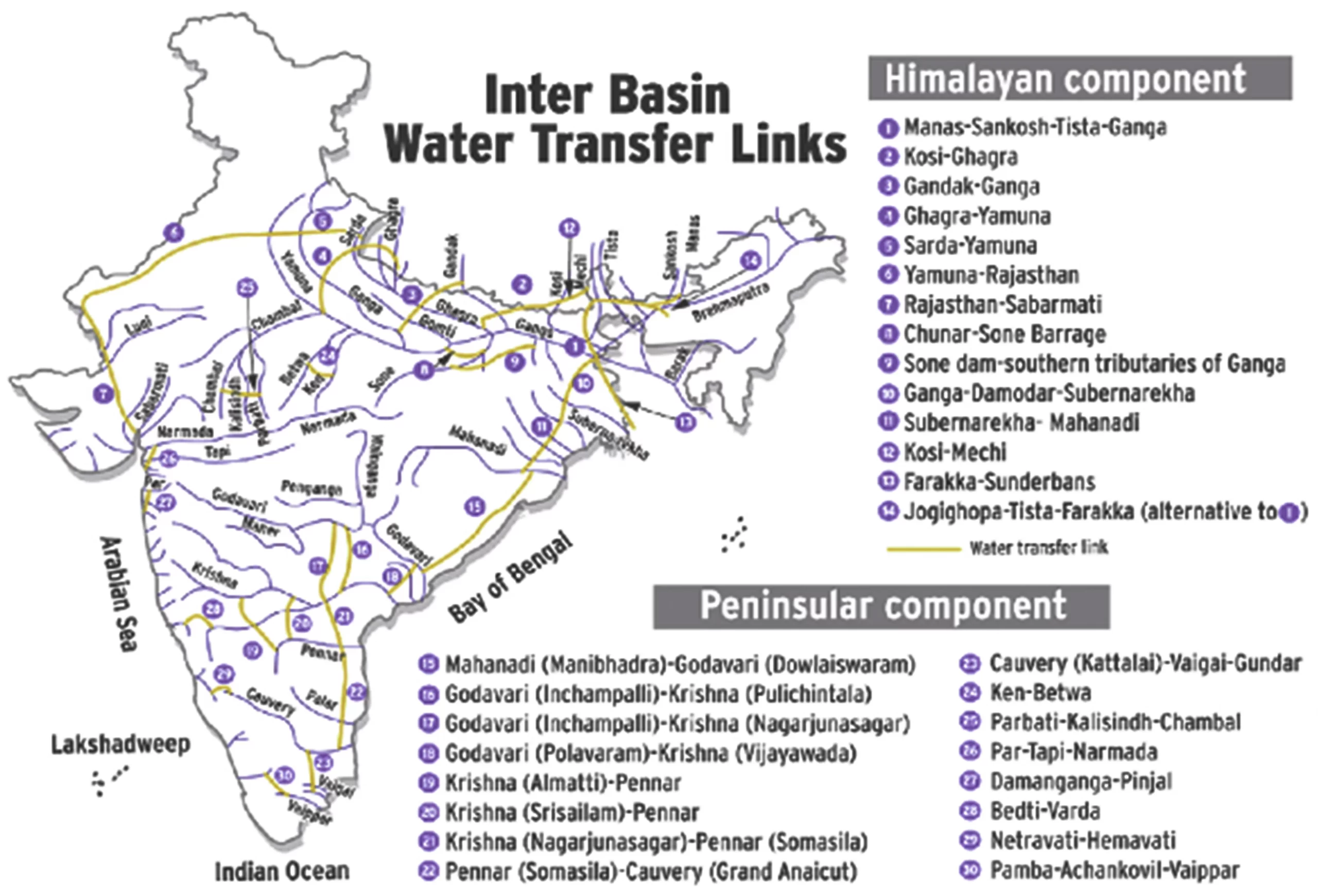Answer:
| Approach:
Introduction
- Discuss the motive of interlinking of rivers.
Body
- Discuss pros and cons of interlinking rivers.
Conclusion
- Conclude your answer with a futuristic approach.
|
Introduction:
The interlinking of rivers aims to connect the rivers and reduce the imbalance between water-scarce and water-surplus regions. It generates hydropower, provides irrigation facilities, and improves the navigability of rivers.
Body:
Pros of Interlinking of Rivers:
- Improved Water Management: Interlinking of rivers aims to improve the management of water resources in India, reducing water scarcity and ensuring better utilization of water. Example the Ken-Betwa river interlinking project in Madhya Pradesh aims to transfer water from the Ken river basin to the Betwa river basin, providing irrigation facilities to farmers in the water-scarce region.
- Hydroelectric Power: Interlinking of rivers will provide an opportunity to generate hydropower, renewable and clean sources of energy. Example the Damanganga-Pinjal river interlinking project in Maharashtra and Gujarat aims to generate 1,775 MW of hydropower.

- Agriculture: Interlinking of rivers aims to provide irrigation facilities to farmers, leading to increased agricultural production and better crop yields. Example the Godavari-Cauvery river interlinking project in southern India aims to provide irrigation facilities to over 35 million hectares of land.
- Navigation: Interlinking of rivers will improve the navigability of rivers and promote inland waterways transportation. Example the proposed National Waterway 4 will connect the Godavari and Krishna rivers, improving transportation and promoting trade.
Cons of Interlinking of Rivers:
- Environmental Concerns: Interlinking of rivers can have adverse environmental impacts, like loss of biodiversity, loss of wetlands, and fragmentation of river ecosystems. Example the proposed Ken-Betwa river interlinking project may result in the submergence of around 4,000 hectares of forest land and affect the Panna Tiger Reserve.
- Cost: Interlinking of rivers is a massive project and requires significant investment. It may also lead to cost overruns, leading to economic inefficiencies. Example the estimated cost of the Godavari-Cauvery river interlinking project is over Rs. 60,000 crore, and it may require significant government subsidies and funding.
- Displacement: Interlinking of rivers may lead to the displacement of people, causing social and economic upheaval. Example the proposed Damanganga-Pinjal river interlinking project may displace around 11,000 people from their homes and livelihoods.
- Inter-state conflicts: Interlinking of rivers may lead to inter-state conflicts over water allocation and usage. Example the proposed Ken-Betwa river interlinking project has faced opposition from the Uttar Pradesh government, which is concerned about the allocation of water from the project to Madhya Pradesh.
- Tension with Neighboring Countries: The proposed interlinking of rivers may also lead to tension with neighboring countries, particularly lower riparian states. Example the proposed interlinking of rivers may affect the water flow of the Brahmaputra river, which may lead to tension with China and Bangladesh.
Conclusion:
Interlinking of rivers is a complex and contentious issue. It has the potential to provide improved water management, hydroelectric power, agriculture, and navigation, its adverse environmental impacts, displacement, cost overruns, and inter-state conflicts.
